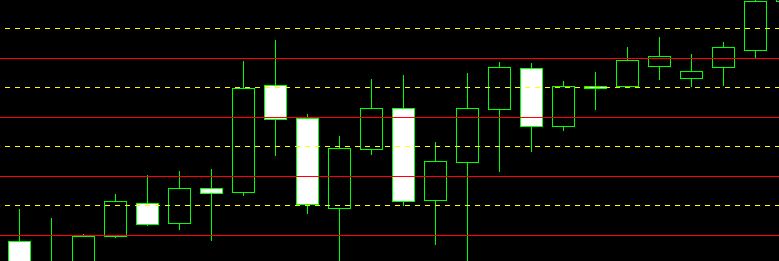One of the annoying situations in Foreign currency trading is when a commerce appears to be going into revenue, then all of the sudden reverses, knocks out your stop-loss, and instantly begins shifting in the wrong way… proper the place you’ll have preferred to enter.
This isn’t a mistake. This isn’t a failure. That is intentional motion — so-called cease looking, or “attempting to find stop-losses.”
What’s cease looking and who’s behind it?
Cease looking is value manipulation by giant gamers (institutional merchants, banks, hedge funds) aimed toward artificially forcing out a mass of small positions, fixing their losses. After that, the value reverses within the path that was initially the aim of the massive contributors.
These “traps” are most frequently arrange:
- Close to key help/resistance ranges — particularly if there are a lot of stop-losses gathered there.
- At native highs/lows — after a powerful motion, when merchants are assured within the continuation of the development.
- Close to rounded value ranges (1.1000, 1.2500, and so forth.) — the place institutional algorithms know that stops are positioned en masse.
What number of instances have you ever been knocked out by a stop-loss?

These ranges do not work. They work for the dealer!
Massive gamers do not commerce “blindly.” They know the place the stops of small merchants are — due to information from liquidity aggregators, volumes, and place studies. And so they use this as a instrument for entry.
Why do common stop-losses work in opposition to you?
Many newbies place stop-loss too shut — “to not lose a lot.” However in a unstable market, particularly on M5–M30 timeframes, the value continuously “noises” — breaks by way of native lows and highs to shake out the indecisive.
When you place a cease 10 factors beneath the help degree — you threat being “knocked out” even with a standard corrective motion.
And if you happen to use fastened percentages of the deposit — you do not account for the market construction, solely your psychology.
Tips on how to shield your self? 4 confirmed rules — with classes from Larry Williams
Place stop-loss past a major degree, not by distance
Not “15 factors,” however past the final bar with excessive quantity, past the final native low (for lengthy) or excessive (for brief). This makes your cease logical, not arbitrary.
As Larry Williams wrote: “The market just isn’t random — it’s cyclical.” His %R indicator exhibits extremes, however he does not commerce on them immediately. He waits for affirmation — the closing of a bar past the extent. The identical goes for the cease: it needs to be past an actual flip, not past random noise.
Use huge stops on small timeframes
On M5 and M15, the value can simply “bounce” by 20–50 factors. Place stops at 30–70 factors — this isn’t “extra threat,” however a sensible recognition of volatility.
Williams did not commerce on M1. He stated: “Commerce on timeframes the place the market breathes, not wheezes.” His suggestions — M5–H1 — should not unintentional. On these timeframes, stops work as a result of the market has already handed by way of “noise filters.”
Keep away from buying and selling in “noisy” hours
Particularly earlier than information, initially and finish of the buying and selling session (for instance, 08:00–09:00 and 16:00–17:00 MSK). Throughout these intervals, liquidity is low — and attempting to find stops turns into simpler.
This immediately echoes what I described within the Sign Histogram indicator: a time filter. Not all hours are equally helpful. When you commerce at instances when the market “sleeps” or “twitches” — you your self invite the cease hunters.
Commerce on affirmation, not on forecast
Do not enter a commerce as a result of “it looks like the value will fall.” Enter when the value has closed past the extent, and the sign histogram (for instance, Sign Histogram) has confirmed a development change.
Larry Williams did not consider in “predictions.” He stated: “Do not attempt to be proper — attempt to be wealthy.” His %R does not give an entry sign. It exhibits the place the market is overheated. And entry — solely after affirmation by closing. That is the philosophy of survival. Not playing.
Psychology: “I used to be proper!” — and why that is your entice
Probably the most harmful phantasm is pondering that “I used to be proper, they simply knocked me out.”
However in buying and selling, the right entry just isn’t the one which in the end turned out to be appropriate. It is the one which matches your system earlier than entry.
When you enter with out figuring out the place others’ stops are and with out contemplating the market construction — you are not a dealer. You are a goal.
Larry Williams stated: “You do not have to be proper — you must be wealthy.”
He did not commerce “on hope.” He traded by guidelines. And stop-loss for him just isn’t “concern,” however a survival instrument.
Conclusion: Cease-loss just isn’t about loss, however about self-discipline
Cease looking just isn’t a verdict. It is a pure a part of the market. Like noise on the chart. Like false breakouts.
Your activity is to not keep away from these actions, however to not fall into their kill zone.
Use ranges, not distances.
Commerce in quiet hours.
Verify indicators.
And keep in mind: probably the most dependable stop-loss just isn’t the one closest to the value, however the one in the precise place.
And if you happen to’ve examine Larry Williams — you perceive that true revenue is born not in the intervening time of entry, however in the intervening time if you determine to not enter.
Do not attempt to “guess” the market.
Construct a system that does not rely on what it can do.

